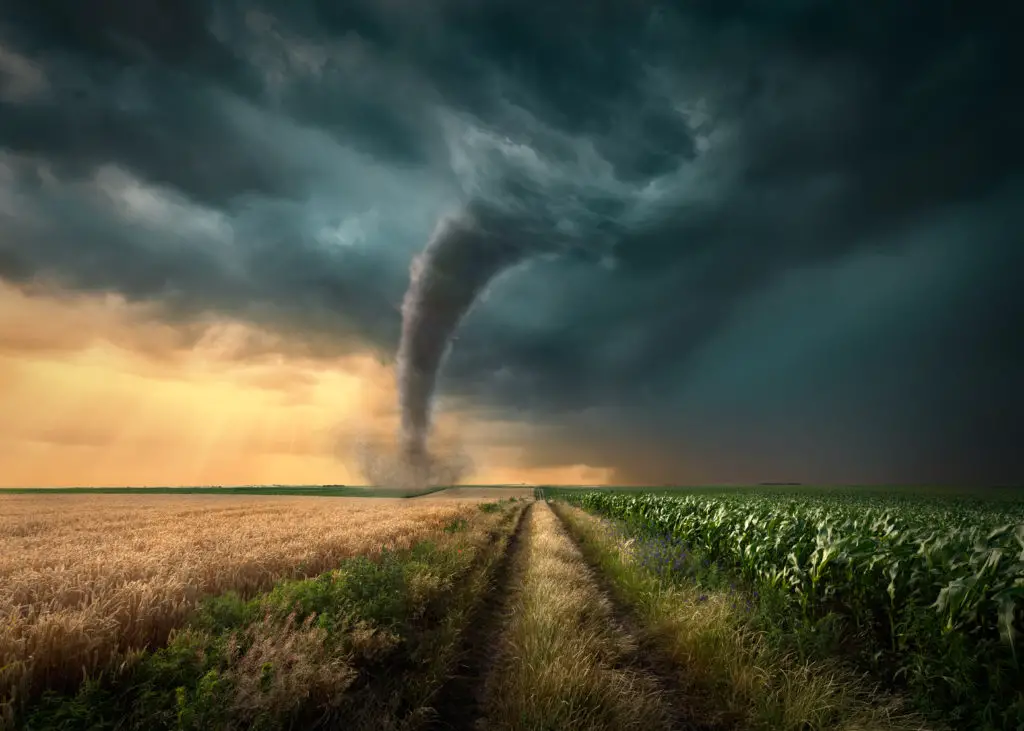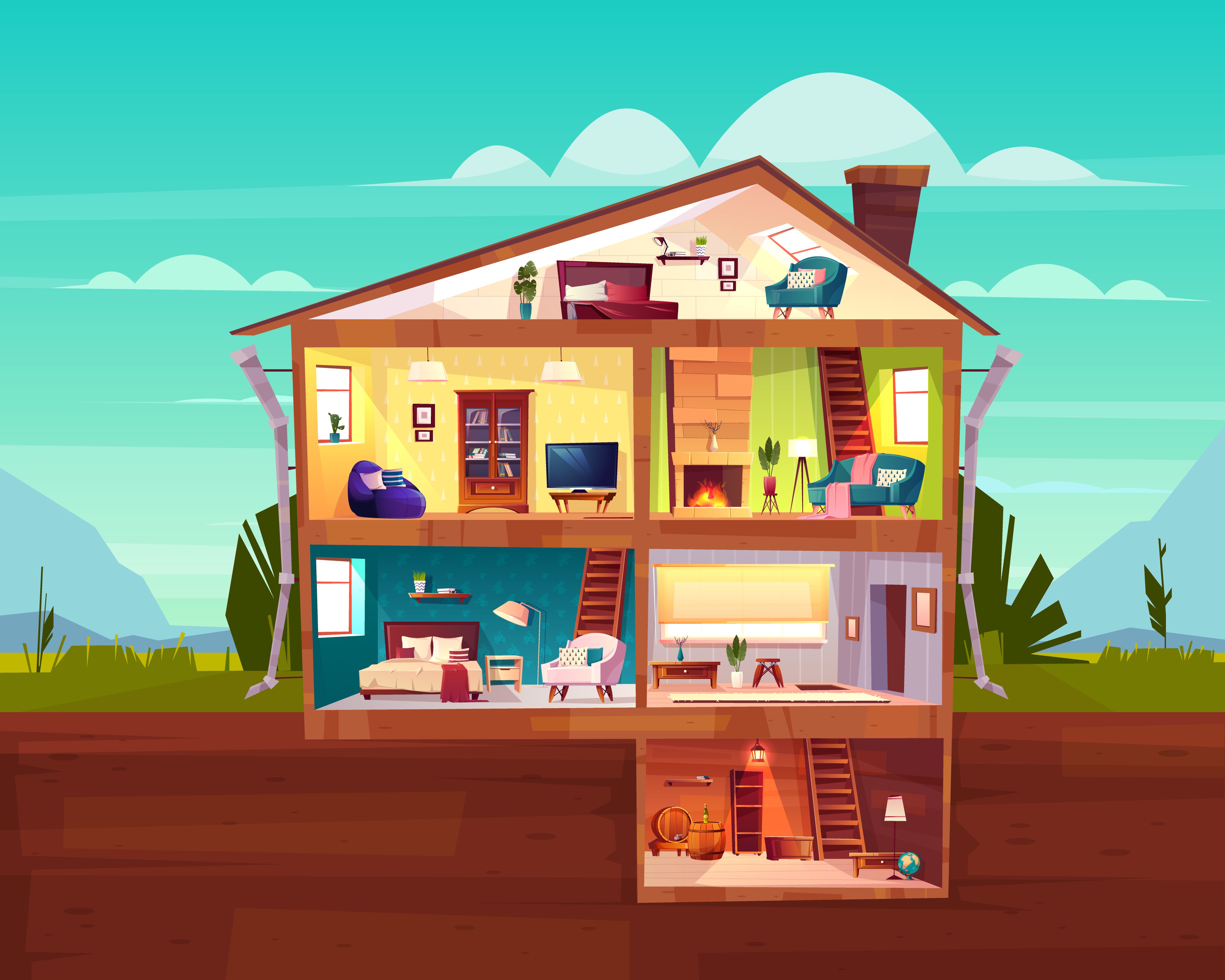
Tornado Alley is the nickname that refers to the areas of the United States that are most likely to experience tornadoes. Different states are included in the lineup, but not every metric is universal. Multiple states, including Texas, Louisiana, Oklahoma, Kansas, South Dakota, Iowa, and Nebraska could be considered to be in Tornado Alley. But a common theme in many of these states is the lack of basements!
One of the main reasons why basements aren’t common in tornado alley is because of the clay-rich soil. This clay tends to shrink and expand depending on water content, which places strain on basements. They can easily collapse or flood, so most homes just don’t have them.
Tornado Alley can be a risky place to build a house due to the combination of environmental factors. Tornadoes are obviously a danger, but these homes could also experience flooding, mass wasting, and sinkholes. For more information about Tornado Alley, other environmental risks, and basement alternatives, read below.
Tornado Alley
Although many different states can be included as part of Tornado Alley, the most common ones are Texas, Oklahoma, and Kansas. It’s hard to properly define boundaries for which states are and aren’t included since tornadoes can form in unexpected places. However, these three states often experience the highest volume of tornadoes.
Due to the similar climate and geography of these states, they also have a lot in common. This means they face a lot of the same environmental struggles and the locals also have some similarities between their housing needs. Tornadoes are powerful forces of nature, and houses need to be as prepared as possible to weather the storm. People and homes need to be able to contend against strong winds, fast-moving debris, and potential property damage.
Tornado Alley has the right combination of conditions that are needed to create tornadoes (and a lot of them!) It can be hard to understand the formation of a tornado, let alone visualize the process. To help out with that, the video below demonstrates how tornadoes are formed.
One of the best ways to hide from tornadoes is to retreat to an underground shelter. Basements would be perfect for this purpose, but unfortunately, most homes Tornado Alley can’t have them. The ground has a high concentration of clay, which shrinks and expands when it’s exposed to water. This makes it difficult to build and maintain basements without making the rest of the house unstable.
For more information about why basements don’t work in these states, check out this article here . It covers North Carolina, which isn’t typically included in Tornado Alley. But that state does have similar soil conditions and it gives another good overview of why basements just aren’t very common.
. It covers North Carolina, which isn’t typically included in Tornado Alley. But that state does have similar soil conditions and it gives another good overview of why basements just aren’t very common.
Environmental Basement Risks
Basements are a bit risky no matter where they’re built. Creating an underground pocket under your home creates some inherent instability. This can be worsened in areas like Tornado Alley though, so let’s look at a few other factors that make it hard to have a basement there.
Flooding
Water damage is always a risk when you’re dealing with basements. They’re underground, which is where excess water is absorbed once it falls. If it gets too saturated, water can press against your windows or leak through the walls. I’ve cleaned out flooded basements before, and believe me when I tell you that they’re an absolute nightmare!
Mold, mud, rot, and structural damage can all come as a result of water damage. Plus, it can end up looking and smelling pretty bad, which no one wants to deal with. If you use your basement for storage, your items could also suffer water damage.
Collapse
Another related risk is structural collapse. When your basement is surrounded by soil that expands and contracts, it is put under a lot of strain. It’s also the lowest part of a house, so it carries the weight of the rest of it. If the basement starts to collapse or crack, the rest of the infrastructure is at risk. Windows could break, floors could warp, and your house will be less prepared to deal with adverse weather (including tornadoes).
Frost Line
Finally, there’s the frost line. This term refers to the depth at which soil freezes in a certain area. In colder Northern areas with more compact soil, the frost line often extends 6-8 feet down. However, in the warmer areas of Texas, Oklahoma, and Kansas, the frost line might only be 2 feet deep.
Most builders cannot legally dig basements that extend below the frost line. This is because the basement will deal with a mixture of frozen and unfrozen soil during cold periods, which will affect different areas unequally. Basements need to be about 8 feet deep, so any basement in Tornado alley would break through the frost line.
Because of this problematic combination of factors, it’s almost impossible for most homes in Tornado Alley to legally build a home with a basement. There are a few loopholes and workarounds, but the risk isn’t usually worth the reward.
Basement Alternatives

Basements are popular home features across the U.S. but there are lots of other options you can use for storage, extra living space, and tornado protection. Even if you could build a basement in Tornado Alley, you might be happier picking an alternative solution.
If you’re interested in adding extra storage space to your home, you could go with an attic, or extra storage sheds outside. Attics are often overlooked, but they can be a great place to store items that you don’t need very often. If you have a particularly large attic, you could also finish it and use it as an extra room! Many nice bedrooms and entertaining spaces have been made in attics.
If you’re concerned about tornadoes and are looking for a good place to take shelter, you could think about building a storm cellar. These are smaller than basements but require less upkeep. You can also take shelter in a windowless, enclosed room such as a bathroom, pantry, or walk-in closet. If you have a second level, don’t go upstairs!
Related Topics:
If you like the article above, here are some other similar articles you should check out!
9 Famous Celebrities Who Live in Kansas City, MO
17 Reasons Not to Move to Kansas City, MO (Voted by the Locals)

